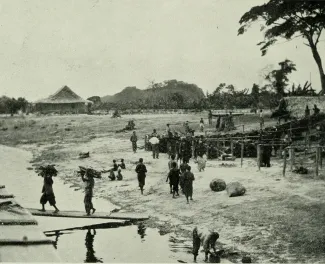

In the early 1900s, a version of the virus that would become known as the human immunodeficiency virus (HIV) was transferred from chimpanzees. This transfer to humans occurred through the food supply somewhere near the Congo River. It traveled across the then Belgian Congo to Europe and eventually found its way to the United States around 1969. Exactly how many people were infected with or died because of HIV before then is unknown. No definitive health record–keeping infrastructure existed in many African countries. Moreover, other health issues masked its spread. HIV’s long incubation period means the virus can spend more than fifteen years attacking a person’s immune system before progressing into its final and most severe stage: AIDS. Even in the United States, AIDS only surfaced more than a decade after its arrival. The virus was first detected among the gay populations in California and New York in 1981.